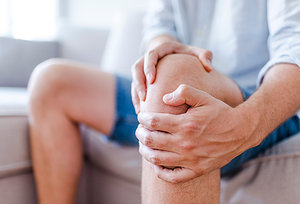Suffering From Knee Pain? Your Chiropractor Is Your Best Choice
By Editorial Staff
New research confirms what many doctors of chiropractic and their patients with patellofemoral pain syndrome (PFPS) – the most common cause of knee pain, characterized by cartilage damage under the kneecap due to overuse or injury – likely know already: spinal manipulation is more effective than local exercise therapy in reducing pain, improving function and other key outcome measures.
A randomized, controlled trial [Scafoglieri A, and colleagues;
BMC Musculoskel Disord, 2021] assigned PFPS patients (ages 16 and older and experiencing anterior knee pain for at least three months) to a local exercise or spinal manual therapy group. For six weeks, patients received high-velocity, low-thrust manipulations of the thoracolumbar region, sacroiliac joint and/or hip (one session per week); or supervised training of the knee and hip muscles with mobilization of the patellofemoral joint (also one session per week). Patients in both groups also received instructions on home exercises that focused on mobilizing the thoracolumbar region.
Outcome measures included maximum, minimum and current pain; function; and maximum voluntary peak force (MVPF) of the quadriceps – all assessed at three points: before intervention, after six weeks of intervention and after six weeks of follow-up (week 12 of the study).
 In terms of improvement, significant between-group differences for both pain and functionality were noted, favoring the spinal manual therapy group. Significant between-group differences were not noted relative to improvement in quadriceps MVPF.
In terms of improvement, significant between-group differences for both pain and functionality were noted, favoring the spinal manual therapy group. Significant between-group differences were not noted relative to improvement in quadriceps MVPF.
Per the study authors: "This is the first study supporting evidence that spinal manual therapy is more effective than local exercise therapy in patients with PFPS in the medium term. Compared to local exercise therapy, six sessions of manipulative therapy of the spine resulted in minimal clinically important differences in pain and functionality after 6 weeks of intervention and at 6 weeks of follow-up."

